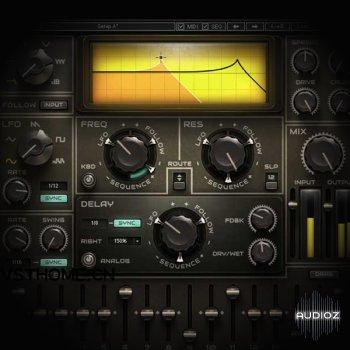FANTASTiC | 09 March 2022 | 107 MB
英文简介:
Using Modulators to add Dynamic Motion to Vocals is a detailed tutorial explaining how to use modulators, in this case, the Waves Metafilter, to add dynamic motion to vocals.
Producers are always striving to find new ways in keeping vocals both interesting and dynamic and using modulators to control various aspects of the vocal take is an extremely powerful and intuitive way to achieve this.
To successfully use this technique we need to first establish what modulators are.
What is a Modulator
A modulator is a device that controls the parameters of another device. The modulator is called the source and the device being modulated is called the destination. A good and simple example of a source modulator is the pitch wheel on a keyboard and in this instance the destination is pitch. In other words, the pitch wheel when moved alters the pitch of the sound being played.
Almost anything can be a source modulator. Most synthesizer keyboards have a dedicated modwheel (modulation wheel) which can be assigned to a whole host of destination sources and we can replicate this scenario in our DAWs. In fact, we can design our own modulators and have them trigger all manner of processes. We can use Midi controllers to control any desired destination and now we can even use audio to modulate another piece of audio. And it doesn’t end there. Most DAWs give you extensive source modulators to use in the Automation Lanes. In effect, we can use a shape to control the volume of the audio.
Using Automation Lanes and Modulators
However, for this tutorial, I am using both Automation Lanes and Lfos to control/modulate a vocal take.
LFOs are often used as source modulators as they can have varying shapes and can be both cyclic and random and they can modulate (control) a whole host of destinations. An LFO is a low-frequency oscillator and it oscillates at a far lower frequency than a traditional oscillator (usually at around 10 Hz). This means that it is not heard like a traditional oscillator but still cycles like one and is, therefore, a great source modulator.
With a staid vocal line sometimes the ear/brain gets used to repetitive gains and particularly with sounds that exhibit a narrow dynamic range and that results in the brain shutting off and being disinterested. This is where this technique shines through.
In the video, I show you how to use automation lanes to draw in various shapes to control the vocal recording’s volume, how to set up and use dynamic equalisers for adding motion to the vocals, how to use a tremolo effect on vocal takes and finish off with a detailed journey into how to use Lfos to process vocals over time.
Plugins used in the video:
?Steinberg Tremelo
?Waves MetaFilter
Topics covered in this video are:
?Modulators
?LFO
?Dynamic Range
?Cycles
?Tremolo
?Automation
?Source Responses
?Amp Destination
?Rate and Depth
?Micro Editing







评论0